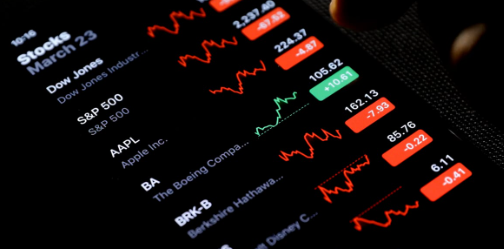Trading simulators are an incredible tool for anyone curious about the financial markets. They let you practice trading in a risk-free environment, making them ideal for beginners and seasoned investors looking to safely test new strategies.
These virtual platforms mimic real-world markets, allowing you to experiment with trades, learn how different assets behave, and get comfortable with trading tools.
What exactly are trading simulators, and how do they work? Let’s take a look.
What Is a Trading Simulator?
A day trading simulator is like a video game for traders. It’s a software platform where you can simulate buying and selling stocks, currencies, cryptocurrencies, and more without ever spending real money.
These platforms recreate real trading scenarios using live or historically accurate market data. You get virtual cash (usually around $100,000) to make trades, so you can see how your strategies would perform in real life.
Beginners widely use trading simulators to learn the basics, but experienced traders also love them for testing out advanced strategies in a safe environment.
How Do Trading Simulators Work?
Trading simulators connect you to a virtual version of the market. While your trades don’t affect real markets, they’re based on real-time or past data, making the experience feel authentic.
You can place buy and sell orders, analyze charts, and even manage a portfolio, just like you would with a real brokerage account. Many simulators also offer tools like performance trackers, tutorials, and market analysis to help you improve.
Think of it as a risk-free playground where you can refine your skills without worrying about losing money. It’s a great way to learn how trading works and to get comfortable with the process before jumping into the real thing.
Why Are Trading Simulators Important?
Trading simulators are a lifesaver for anyone who wants to learn about trading without risking their savings. They allow beginners to experiment with trades and strategies without the fear of losing real money.
For experienced traders, they’re a great way to test new ideas. You can try strategies in a simulated market to see what works and what doesn’t without risking a dime.
Simulators are also fantastic for familiarizing yourself with a trading platform. They let you practice placing orders, analyzing charts, and navigating tools so you don’t make costly mistakes when it’s time to trade for real.
What Types of Trading Simulators Are Available?
There are different kinds of trading simulators depending on what you want to focus on. Stock market simulators let you practice buying and selling shares of companies, using live or historical data to mimic real conditions.
Forex simulators are geared toward currency trading. They’re ideal for learning how to navigate the fast-paced, high-leverage world of forex markets.
If options trading is your thing, some simulators are designed to help you understand complex strategies like straddles or spreads. And for those into crypto, cryptocurrency simulators can replicate the wild volatility of digital assets.
No matter your interest, there’s a simulator tailored to your needs.
What Are the Benefits of Using Trading Simulators?
One of the best things about trading simulators is how safe they are. They let you make mistakes without real financial consequences, which is perfect for beginners.
Simulators also help build confidence. You can try different strategies, track your progress, and feel more prepared when diving into live trading.
For experienced traders, simulators are a great way to stay sharp. Markets are always changing, and simulators let you practice adapting to new trends or test strategies before putting your real money on the line.
Are There Limitations to Trading Simulators?
While trading simulators are super useful, they’re not perfect. One big drawback is that they can’t replicate the emotional pressure of real trading. Making bold moves with virtual cash is one thing, but it’s a different game when real money is at stake.
Simulated markets also don’t always reflect real-world factors like slippage, commissions, or liquidity issues. This can make your simulated performance look better than what you might achieve in actual trading.
Lastly, succeeding in a simulator doesn’t guarantee you’ll succeed in live markets. There are just too many variables in real trading that simulators can’t fully replicate.
Should You Use a Trading Simulator?
If you’re new to trading, a simulator is a must-have. It’s the safest way to learn the ropes and figure out how everything works before putting your hard-earned money on the line.
Even experienced traders can benefit from simulators. They’re perfect for testing new strategies, getting familiar with a new platform, or adapting to changing market conditions.
Just remember that simulators are a learning tool, not a crystal ball. They can teach you the mechanics of trading but can’t prepare you for the emotional challenges of real markets.
Be Prepared for Real Trading
Trading simulators are an awesome resource for anyone interested in trading, whether you’re just starting or looking to sharpen your skills. They offer a risk-free environment to learn, practice, and experiment, making them one of the best ways to prepare for the real thing.
While they have limitations, the benefits of trading simulators far outweigh the drawbacks. By using a simulator, you’ll build confidence, refine your strategies, and be better equipped to tackle live markets when the time comes.







